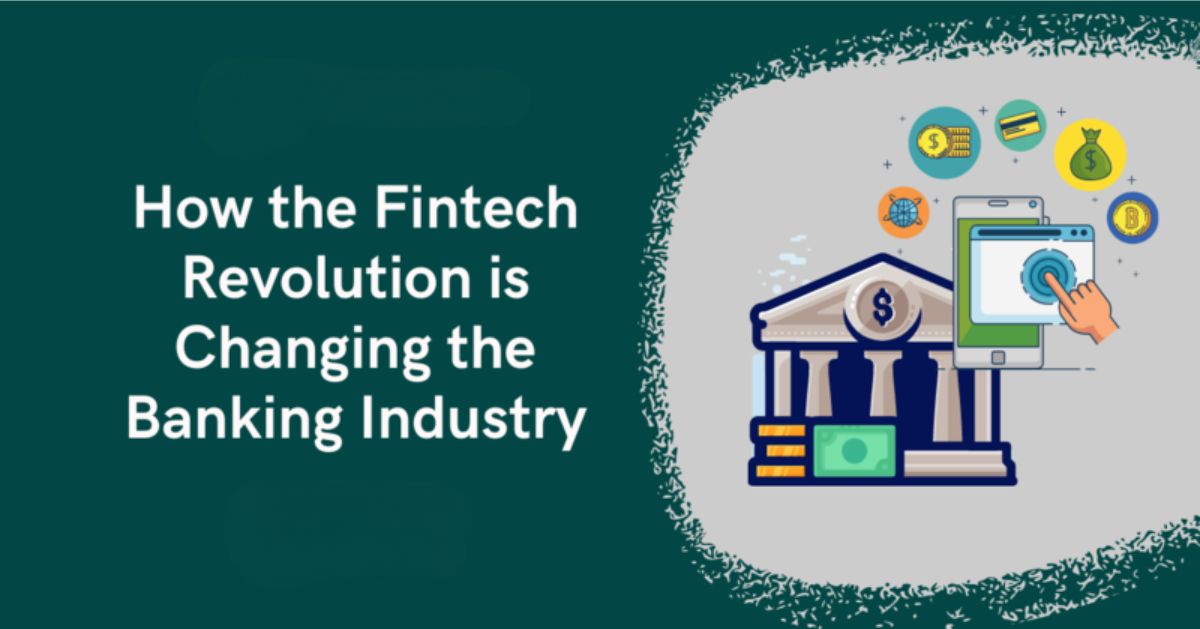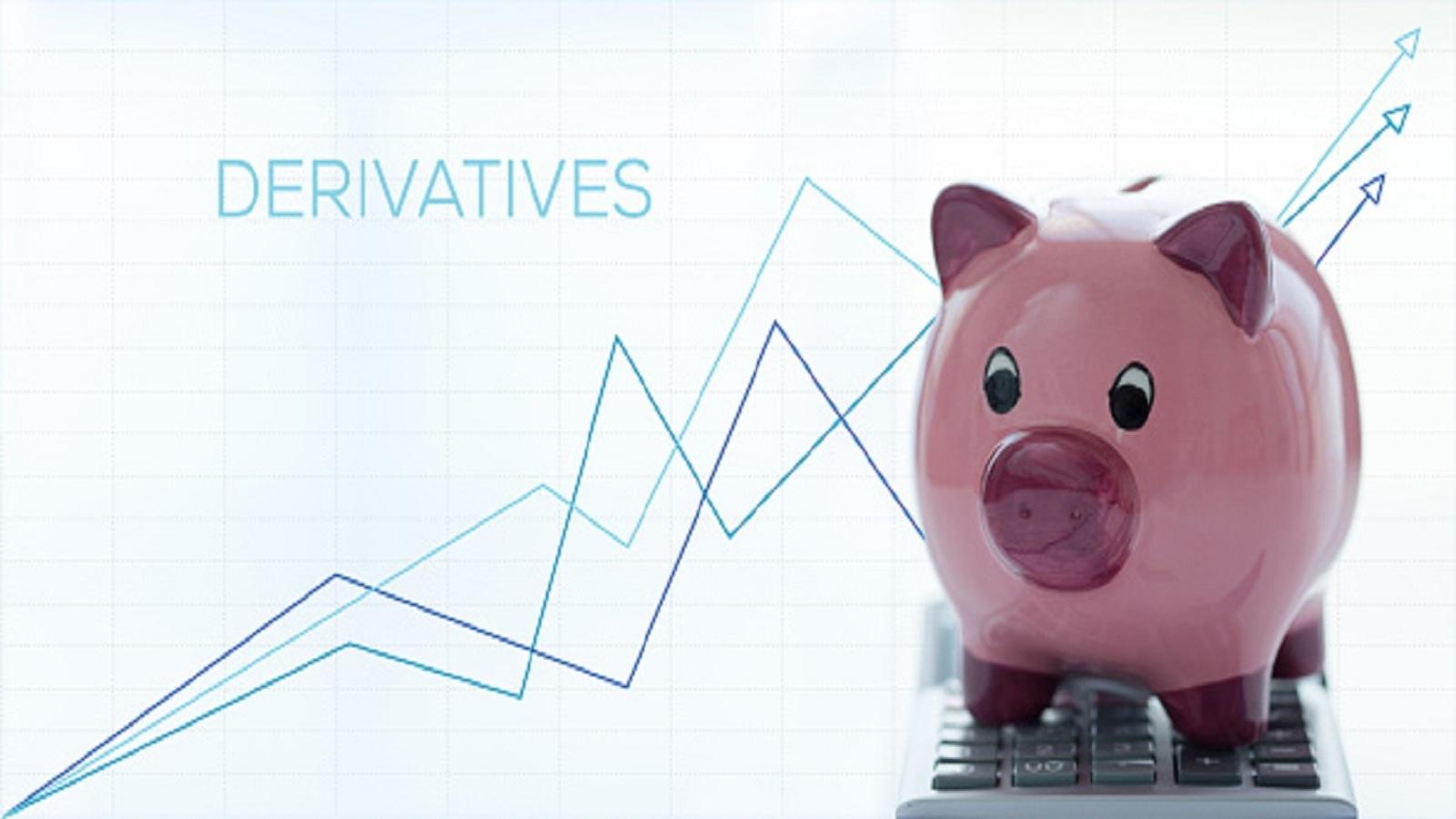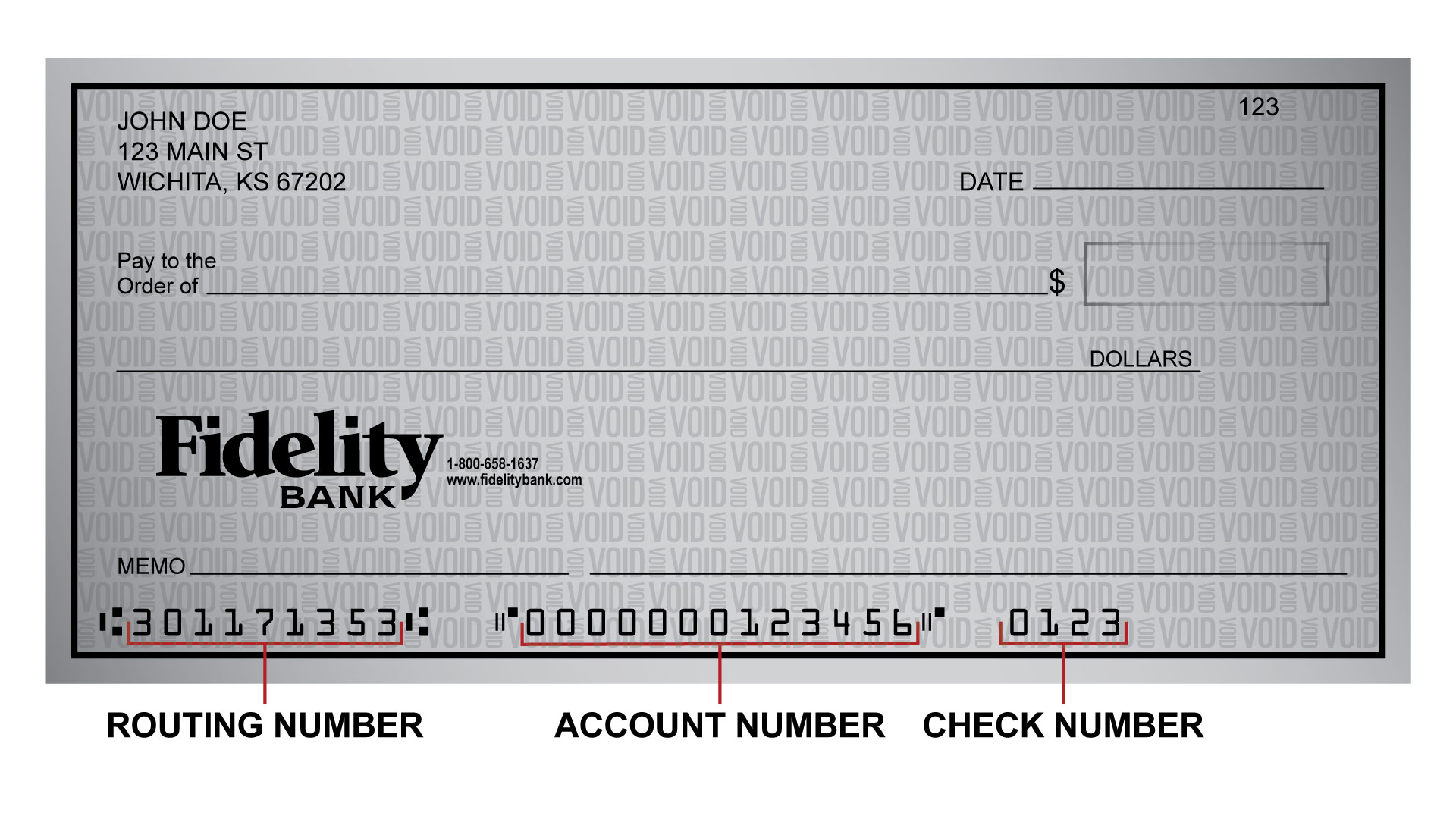Introduction
The advent of financial technology, commonly known as fintech, has revolutionized the banking industry in recent years. Fintech companies harness cutting-edge technology to provide innovative financial services and products to consumers and businesses alike. This digital disruption has transformed the way we bank, making financial transactions faster, more convenient, and secure.
In this article, we will explore how fintech has changed banking and the key areas where its impact is most pronounced.
Traditional banking has often been associated with long queues, cumbersome paperwork, and limited access to services. With the rise of fintech, these inconveniences are becoming a thing of the past. Fintech companies have embraced digital solutions to offer a seamless and personalized banking experience.
From mobile banking and digital payments to personalized financial tools and robo-advisors, fintech has enabled individuals and businesses to manage their finances more efficiently and securely. Additionally, the implementation of blockchain technology has brought transparency and efficiency to financial transactions.
While the advancements in fintech have undoubtedly transformed the banking landscape, it’s important to carefully evaluate the potential risks and challenges that come with it. Enhanced security measures must be put in place to mitigate the threat of cybercrimes and data breaches. Moreover, striking a balance between innovation and regulation is crucial to ensure a stable and thriving financial ecosystem.
In the following sections, we will delve into the various ways in which fintech has reshaped traditional banking and how these changes have impacted our daily lives.
The Rise of Fintech
In the last decade, we have witnessed an exponential growth in the fintech sector, with startups and established companies alike capitalizing on technological advancements to reshape the banking industry.
Fueled by the increasing availability of internet access and smartphones, fintech has gained significant traction worldwide. These innovative financial services aim to address customers’ needs for convenience, accessibility, and efficiency.
One of the key factors behind the rise of fintech is the shift in consumer behavior. Modern consumers demand banking services that are available on-the-go, and fintech companies have risen to the challenge by offering mobile banking applications. Through these apps, customers can conveniently manage their accounts, transfer funds, and make payments with just a few taps on their smartphones.
Another driving force behind the growth of fintech is the digital revolution in the payment industry. Traditional cash and card payments are being replaced by digital payment solutions such as mobile wallets and contactless payments. These innovations not only facilitate faster and more secure transactions but also offer additional benefits such as loyalty rewards and personalized offers.
Beyond mobile banking and digital payments, fintech has also introduced personalized financial tools to empower individuals in managing their finances. Artificial intelligence and machine learning algorithms analyze user data to provide personalized insights, budgeting tips, and investment recommendations. These tools allow individuals to make informed financial decisions tailored to their unique circumstances and goals.
The rise of fintech has also disrupted the wealth management industry. Robo-advisors, powered by algorithms, have made investment advice and portfolio management accessible to a broader audience. They offer cost-effective and hassle-free investment solutions, appealing to those who may have found traditional financial advisory services expensive or intimidating.
Furthermore, fintech has democratized lending through the emergence of peer-to-peer lending platforms. These platforms connect borrowers directly with individual lenders, bypassing the traditional banking system. This new model of lending has provided access to credit for underserved segments of the population, driving financial inclusivity.
Overall, the rise of fintech has transformed the banking industry, offering innovative solutions to meet the evolving needs of consumers and businesses. The journey of fintech is far from over, and we can expect further advancements that will continue to shape the future of banking.
Mobile Banking
One of the most notable impacts of fintech on the banking industry is the advent of mobile banking. With the proliferation of smartphones and the increasing reliance on digital devices, mobile banking has become a game-changer for consumers.
Mobile banking applications have made it possible for individuals to conveniently manage their finances anytime and anywhere. With just a few taps on their smartphones, users can check their account balances, view transaction history, transfer funds between accounts, pay bills, and even deposit checks through the app.
The convenience offered by mobile banking has drastically reduced the need for physical branch visits. Traditional banking tasks, such as checking account balances or making payments, can now be done with ease from the comfort of one’s home or on the go.
Moreover, mobile banking has enhanced the security of financial transactions. Built-in authentication measures, such as fingerprint or facial recognition, provide an additional layer of protection for users. In the event of a lost or stolen physical card, mobile banking apps allow users to instantly freeze or cancel their cards, preventing unauthorized access to their accounts.
Mobile banking has also facilitated the adoption of cashless transactions. With mobile payment options like Apple Pay, Google Pay, and Samsung Pay, users can make secure and contactless payments using their smartphones. This not only eliminates the need to carry physical cash or cards but also speeds up the transaction process.
Furthermore, mobile banking apps have become a platform for financial education and personal financial management. Users can access tools that help track their spending, set budgets, and receive alerts for upcoming bills or low balances. These features empower individuals to take control of their financial well-being and make informed decisions.
As mobile banking continues to evolve, we can expect further enhancements and features. Open banking initiatives, for example, are driving collaborations between fintech companies and traditional banks, enabling users to access their financial data across different platforms and services.
Overall, mobile banking has revolutionized the way we interact with our finances. It has made banking more accessible, convenient, and secure, empowering individuals to take control of their financial lives at their fingertips.
Digital Payments
Another significant impact of fintech on the banking industry is the rise of digital payments. Traditional payment methods, such as cash and checks, are being rapidly replaced by faster, more secure, and convenient digital payment solutions.
One of the key drivers behind the shift towards digital payments is the increasing adoption of smartphones and connected devices. Mobile wallets, such as Apple Pay, Google Pay, and Samsung Pay, enable users to store their payment information securely on their devices and make contactless payments using near-field communication (NFC) technology.
These mobile payment solutions have transformed the way we pay for goods and services. Instead of fumbling through wallets for cash or swiping cards, users can simply tap their smartphones on a compatible payment terminal to complete a transaction. This not only saves time but also reduces the risk of physical contact and the spread of germs, which has become especially important in the wake of the COVID-19 pandemic.
Besides mobile wallets, digital payment platforms have gained significant popularity. Services like PayPal, Venmo, and Alipay enable users to send and receive money electronically, making it easier to split bills, pay friends or family, or make online purchases.
Additionally, digital payment solutions have paved the way for e-commerce to thrive. The convenience and security offered by these platforms have driven the growth of online shopping, allowing consumers to make purchases from the comfort of their homes.
Fintech companies are also leveraging digital payment solutions to cater to the needs of businesses. Online payment gateways and payment processors, such as Stripe and Square, provide merchants with seamless integration options and enhanced security for accepting online payments. This has fueled the growth of e-commerce businesses and enabled small businesses to expand their customer base globally.
Furthermore, digital payments have also brought financial inclusion to underserved populations. For individuals without access to traditional banking services, digital payment solutions provide a platform to send and receive money securely, opening up new opportunities for economic participation.
As digital payments continue to evolve, we can expect to see further innovations, such as the integration of cryptocurrencies and the development of instant payment solutions. These advancements will continue to reshape the way we transact and contribute to a more cashless and digitally connected society.
Personalized Financial Tools
Fintech has revolutionized the way individuals manage their finances by offering personalized financial tools that cater to their unique needs and goals. From budgeting apps to investment platforms, these tools leverage advanced technologies to provide tailored insights and recommendations.
One of the key advantages of personalized financial tools is their ability to aggregate and analyze user data. Through machine learning algorithms and artificial intelligence, these tools can track and categorize users’ income, expenses, and financial habits. This data is then used to generate personalized insights and recommendations.
Budgeting apps, such as Mint or YNAB (You Need a Budget), help users track their spending, set financial goals, and create budgets. These apps provide a clear overview of where money is being spent and offer suggestions on areas where users can save or cut expenses.
Moreover, personalized financial tools have transformed the investment landscape. Robo-advisors, for example, use algorithms to analyze user data and provide automated investment recommendations. Based on users’ risk tolerance, time horizon, and investment goals, these tools create diversified portfolios and make adjustments as market conditions change.
These tools have made investing more accessible and affordable for individuals who may not have considered traditional investment options. The automation and low fees associated with robo-advisors have democratized investment management and eliminated many of the barriers that were once associated with seeking professional financial advice.
Furthermore, personalized financial tools have expanded beyond budgeting and investing. They now offer solutions for debt management, retirement planning, and even tax optimization. Users can access tools and calculators to estimate their retirement savings goals, calculate loan payments, or analyze the tax implications of different financial decisions.
By providing users with the tools to make informed financial decisions, personalized financial tools empower individuals to take control of their financial well-being. These tools educate users about financial concepts, help them set achievable goals, and provide ongoing support in reaching those goals.
As technology advances, we can expect to see even more sophisticated and personalized financial tools. For example, developments in artificial intelligence may enable financial tools to offer real-time financial advice or make personalized recommendations for specific life events, such as buying a home or starting a family.
Overall, personalized financial tools have transformed the way individuals manage their finances and make financial decisions. With access to tailored insights and recommendations, users are equipped with the knowledge and tools to achieve their financial goals and improve their financial well-being.
Robo-Advisors
Robo-advisors have emerged as a disruptive force in the financial industry, revolutionizing the way individuals invest and manage their portfolios. These digital platforms utilize algorithms and advanced analytics to provide automated investment advice and portfolio management services.
One of the key advantages of robo-advisors is their accessibility. Traditional investment management services have long been associated with high fees and minimum investment requirements, making them inaccessible to many individuals. Robo-advisors, on the other hand, have significantly lowered the barriers to entry by offering low fees and often requiring no minimum investment.
Robo-advisors work by assessing a user’s risk tolerance, investment goals, and time horizon, and then use complex algorithms to construct and manage a diversified portfolio of low-cost exchange-traded funds (ETFs) or index funds. This automated approach takes away the need for human intervention, reducing costs and enabling investors to create a well-diversified investment portfolio quickly.
Another advantage of robo-advisors is their ability to provide personalized investment advice. By analyzing user data and preferences, these platforms can offer customized investment strategies that align with an individual’s financial goals and risk tolerance. Investors have the flexibility to choose from various investment models, ranging from conservative to aggressive, and can adjust their strategies as their circumstances change.
Robo-advisors also offer enhanced transparency. Clients can easily access their investment portfolios and track real-time performance through intuitive online dashboards or mobile apps. This transparency gives investors greater control and visibility over their investments, instilling confidence and trust in the management of their portfolios.
Furthermore, robo-advisors provide simplicity and convenience. Time-consuming tasks such as rebalancing portfolios, tax-loss harvesting, and dividend reinvestment are automated, saving investors valuable time and effort. Users can easily manage their investments through user-friendly interfaces and receive regular updates and notifications regarding their portfolio performance.
However, it’s important to note that robo-advisors are not intended to replace human financial advisors entirely. While they offer cost-effective and efficient investment solutions, there are instances where the expertise and personal touch of a human advisor may be necessary. Some robo-advisor platforms have recognized this, and offer the option to communicate with human advisors for additional support and guidance.
As technology continues to advance, we can expect robo-advisors to further evolve and offer even more sophisticated features. Incorporation of artificial intelligence and machine learning may allow for highly personalized wealth management strategies and predictive analytics, enabling investors to make more informed investment decisions.
In summary, robo-advisors have democratized investment management, making it accessible to a broader audience. With their low fees, personalized advice, transparency, and convenience, robo-advisors have transformed the way individuals invest and manage their portfolios, empowering them to take control of their financial future.
Peer-to-Peer Lending
Peer-to-peer (P2P) lending, also known as marketplace lending, has emerged as an innovative alternative to traditional lending institutions. It allows individuals and businesses to borrow money directly from other individuals or investors, bypassing traditional banks and financial intermediaries.
One of the key advantages of P2P lending is its ability to provide access to credit for individuals and businesses that may have difficulty obtaining loans through traditional channels. This includes borrowers with limited credit history, small businesses with less-established financial records, or individuals who have been declined by banks due to stricter lending criteria.
P2P lending platforms facilitate the connection between borrowers and lenders, allowing them to negotiate loan terms and interest rates. The elimination of traditional intermediaries streamlines the lending process, making it faster and more efficient. In many cases, P2P loans can be approved and funded within days, significantly faster than traditional bank loans.
Additionally, P2P lending provides opportunities for lenders to earn attractive returns on their investment. By lending money directly to borrowers, investors can potentially receive higher interest rates than they would earn on traditional savings accounts or investment vehicles. This attracts individuals and institutional investors looking to diversify their portfolios and generate passive income.
Furthermore, P2P lending platforms often employ advanced risk-assessment algorithms to evaluate borrowers’ creditworthiness. These algorithms analyze factors such as credit scores, income levels, and loan purposes to assess the likelihood of repayment. This allows lenders to make more informed decisions when choosing potential borrowers.
P2P lending also fosters financial inclusivity by expanding access to credit in underserved markets. This includes individuals and businesses located in remote or underbanked areas, as well as those who may not meet the stringent requirements of traditional banks. P2P lending platforms help bridge the gap between borrowers and lenders, creating opportunities for financial empowerment and economic growth.
However, it is important to note that P2P lending carries certain risks. Borrowers should be aware of the terms and conditions of the loans and carefully consider their repayment abilities. Investors should also diversify their lending portfolios to mitigate the risk of default. P2P lending platforms often provide tools and information to help borrowers and lenders make informed decisions and manage their risks effectively.
Overall, P2P lending has disrupted the lending landscape by providing a more inclusive and efficient alternative to traditional banks. By connecting borrowers directly with lenders, P2P lending platforms offer opportunities for individuals and businesses to access credit and investors to earn attractive returns, contributing to a more decentralized and accessible financial ecosystem.
Blockchain Technology
Blockchain technology has emerged as a powerful tool for transforming various industries, including the banking sector. It offers transparency, security, and efficiency in financial transactions and has the potential to revolutionize the way we store, transfer, and verify digital assets.
At its core, blockchain is a decentralized and distributed ledger that records transactions across multiple computers or nodes. Each transaction is verified by network participants, creating a transparent and immutable record of all transactions. This eliminates the need for intermediaries and provides a level of trust and security that traditional centralized systems cannot match.
One of the key applications of blockchain technology in banking is in payment systems. Traditional cross-border payments can be slow, expensive, and fraught with complexities. Blockchain-based payment systems, such as Ripple and Stellar, enable near-instantaneous and cost-effective transfers by eliminating the need for multiple intermediaries.
Smart contracts, another key feature of blockchain technology, have the potential to automate and streamline various banking processes. These self-executing contracts define the terms and conditions of an agreement, and automatically enforce compliance upon meeting specific conditions. This can reduce the need for manual intervention and improve the efficiency of tasks such as loan approvals or trade settlements.
Blockchain technology can also enhance security in banking. The decentralized nature of blockchain reduces the risk of data tampering or unauthorized access. When transactions are recorded on a blockchain, they are encrypted and appended to a chain of previous blocks, making it virtually impossible to alter or manipulate transaction records.
Moreover, blockchain can enable identity verification and authentication in a more secure and efficient manner. Traditional identity verification processes often involve sharing sensitive personal information with multiple parties, increasing the risk of data breaches. Using blockchain, individuals can maintain control over their digital identities, sharing only the necessary information without compromising their privacy.
Another promising application of blockchain in banking is in trade finance. The complex nature of international trade often involves multiple parties, documents, and intermediaries. Implementing blockchain-based solutions can streamline and automate trade finance processes, reducing paperwork, enhancing transparency, and mitigating the risk of fraud.
While blockchain technology offers immense potential, it is important to overcome challenges such as scalability, interoperability, and regulatory frameworks. Scaling blockchain systems to handle a large number of transactions can be a significant undertaking. Interoperability between different blockchain networks will also be crucial to ensure seamless integration into existing banking infrastructures. Additionally, regulatory frameworks need to be established to address legal and compliance aspects of blockchain implementation.
In summary, blockchain technology has the potential to revolutionize the banking industry by enhancing security, transparency, and efficiency. From payment systems to identity verification and trade finance, blockchain-based solutions offer transformative possibilities that can reshape traditional banking processes and improve customer experiences.
Enhanced Security Measures
With the rise of fintech, the banking industry has placed a strong emphasis on enhancing security measures to protect sensitive customer information and prevent fraudulent activities. Traditional security measures have been supplemented and, in some cases, replaced by advanced technologies that offer increased protection against cyber threats.
One of the key advancements in security is the implementation of multi-factor authentication (MFA). MFA requires users to provide multiple forms of identification to verify their identities, such as a combination of a password, a fingerprint scan, or a one-time password sent via SMS. This additional layer of security significantly reduces the risk of unauthorized access to online banking accounts.
Another important security measure is the use of biometrics. Fingerprint scans, facial recognition, and voice recognition have become common authentication methods in mobile banking applications. Biometrics offer a higher level of security as they are unique to each individual and difficult to replicate.
In addition to MFA and biometrics, encryption technology plays a crucial role in safeguarding sensitive data. Encryption algorithms convert data into unreadable ciphertext, protecting it from unauthorized access. This ensures that even if a hacker gains access to the data, it remains indecipherable without the encryption key.
Moreover, the adoption of secure socket layer (SSL) certificates has become standard practice for secure online transactions. SSL encrypts data transmitted between a user’s browser and the bank’s server, preventing interception and eavesdropping by malicious actors.
Fintech companies also employ robust fraud detection systems that utilize artificial intelligence and machine learning algorithms. These systems analyze patterns in user behavior and transaction history to identify potential fraud or suspicious activities. In the event of fraudulent activity, real-time alerts and notifications can be sent to users to verify or block transactions.
Blockchain technology, with its decentralized and transparent nature, offers enhanced security for financial transactions. The immutability and consensus mechanism of blockchain prevent unauthorized modifications to transaction records, making it extremely difficult for hackers to manipulate data or commit fraud.
Furthermore, regulatory bodies and industry organizations have implemented stringent data protection and privacy regulations. These regulations, such as the General Data Protection Regulation (GDPR), require banks and fintech companies to ensure the safe handling and storage of customer data, protecting individuals’ privacy rights.
While these security measures greatly enhance the protection of customer information, it’s important for individuals to remain vigilant and adopt good security practices. This includes regularly updating passwords, avoiding suspicious links or email attachments, and monitoring accounts for any unauthorized activity.
As technology evolves, so do cybersecurity threats. To stay ahead of cybercriminals, the banking industry must continue to invest in research and development of innovative security measures. Collaboration between industry stakeholders, regulators, and technology experts is essential to proactively address emerging threats and protect the integrity of the financial ecosystem.
Conclusion
Fintech has undoubtedly transformed the banking industry, revolutionizing the way we bank, make payments, and manage our finances. The rise of mobile banking has brought unprecedented convenience and accessibility, allowing individuals to manage their accounts and make transactions with just a few taps on their smartphones.
Digital payments have replaced traditional cash and checks, offering faster, more secure, and convenient ways to make transactions. Personalized financial tools have empowered individuals to take control of their finances, providing tailored insights and recommendations to improve their financial well-being.
Robo-advisors have democratized investment management, offering cost-effective and automated investment solutions to a wider audience. Peer-to-peer lending has expanded access to credit, providing opportunities for individuals and businesses overlooked by traditional banks.
Blockchain technology has brought transparency, security, and efficiency to financial transactions, paving the way for improved cross-border payments, trade finance, identity verification, and more.
Enhanced security measures, including multi-factor authentication, biometrics, encryption, and fraud detection systems, have bolstered the protection of customer information, ensuring a safer banking experience.
As the fintech landscape continues to evolve, it is essential for the banking industry to embrace the opportunities and challenges that come with technological advancements. Collaboration between banks, fintech startups, regulators, and customers is crucial to ensure a secure and inclusive financial ecosystem.
While fintech has brought countless benefits, it is important to strike a balance between innovation and regulation. Safeguarding consumer protection, privacy, and data security is paramount.
In conclusion, fintech has reshaped the banking industry, enhancing accessibility, convenience, security, and efficiency across various aspects. As we embark on a digital future, embracing fintech will lead to even more transformative changes, ultimately benefiting individuals, businesses, and the overall financial ecosystem.

























